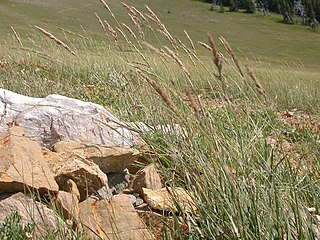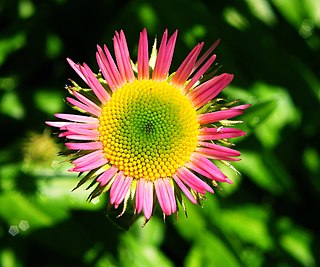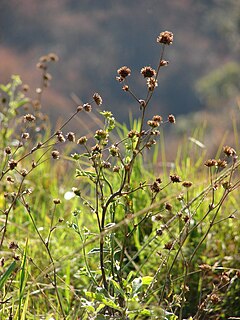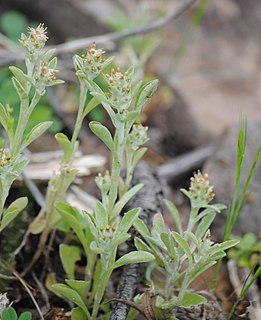
Gaillardia is a genus of flowering plants in the sunflower family, Asteraceae, native to North and South America. It was named after Maître Gaillard de Charentonneau, an 18th-century French magistrate who was an enthusiastic botanist. The common name may refer to the resemblance of the inflorescence to the brightly patterned blankets made by Native Americans, or to the ability of wild taxa to blanket the ground with colonies. Many cultivars have been bred for ornamental use.

Grindelia (gumweed) is a genus of plants native to the Americas belonging to the sunflower family. The genus was named for Latvian botanist David Hieronymus Grindel, 1776–1836.

Calamagrostis purpurascens, is a perennial grass commonly known as purple reedgrass, purple pinegrass, or alpine reedgrass. It grows 30 to 80 centimetres (31 in) tall.

Trixis is a genus of shrubs in the aster family, Asteraceae, native to North and South America including the West Indies.

Hymenoxys is a genus of plants in the sunflower family, native to North and South America. It was named by Alexandre Henri Gabriel de Cassini in 1828.

Gutierrezia is a genus of flowering plants in the family Asteraceae, native to western North America and western South America. Plants of this genus are known generally as snakeweeds or matchweeds. Some species have been called greasewood. They are annual or perennial plants or subshrubs with yellow or white flowers.

Oreostemma is a genus of flowering plants in the daisy family, Asteraceae. Species are found in western North America, with two endemic to California.
Lophopappus is a genus of South American flowering plants in the daisy family.
Chiliotrichiopsis is a genus of flowering plants in the aster family, Asteraceae. It is native to the Andes, where it is distributed in Peru, Bolivia, and Argentina. Species occur in the mountains up to 4200 meters in elevation.
Tagetes argentina is a South American plant species in the sunflower family. It is found in Argentina and Bolivia on granitic and rhyolitic soils.
Henry Hurd Rusby (1855–1940) was an American botanist, pharmacist and explorer. He discovered several new species of plants and played a significant role in founding the New York Botanical Garden and developing research and exploration programs at the institution. He helped to establish the field of economic botany, and left a collection of research and published works in botany and pharmacology.

Elephantopus mollis, common names tobacco weed, and soft elephantsfoot, is a tropical species of flowering plant in the sunflower family.
Tagetes campanulata is a South American species of plants in the sunflower family. It is found in Argentina and Bolivia.
Tagetes pusilla, the lesser marigold, is a Latin American species of marigolds in the sunflower family. It is native Central America and western South America from Guatemala to northern Argentina.

Gamochaeta pensylvanica, called Pennsylvania cudweed or Pennsylvania everlasting, is a widespread species of flowering plant in the sunflower family. It is native to South America and introduced into Eurasia, Africa, Australia, and North America. The pensylvanica epithet is a misnomer, as the plant is not native to Pennsylvania and only marginally naturalized there.
Hymenoxys anthemoides, the South American rubberweed, is a South American species of flowering plants in the daisy family. It is native to Bolivia, Paraguay, Uruguay, and Argentina.
Hymenoxys rusbyi is a North American species of flowering plant in the daisy family known by the common names Rusby's rubberweed or Rusby's bitterweed. It has been found only in the states of Arizona and New Mexico in the southwestern United States.
Hymenoxys cabrerae is a South American species of flowering plant in the daisy family. It has only been found in Argentina
Hymenoxys tweediei is a South American species of flowering plant in the daisy family. It has been found mostly in Uruguay with a few populations in northeastern Argentina and southern Brazil.
Tetraneuris turneri is a North American species of plants in the sunflower family, known by the common name Turner's four-nerve daisy. It has been found in the US state of Texas and in the nearby Mexican state of Coahuila.








